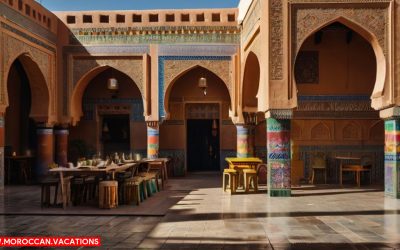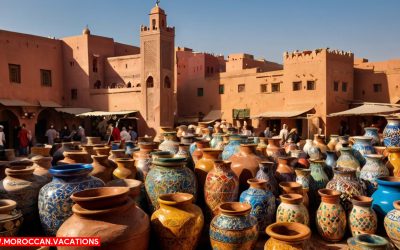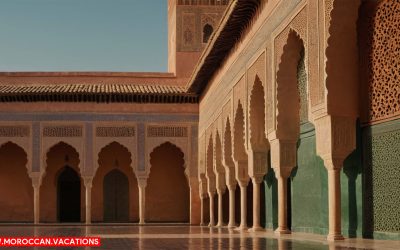Origins of Moroccan Calligraphy
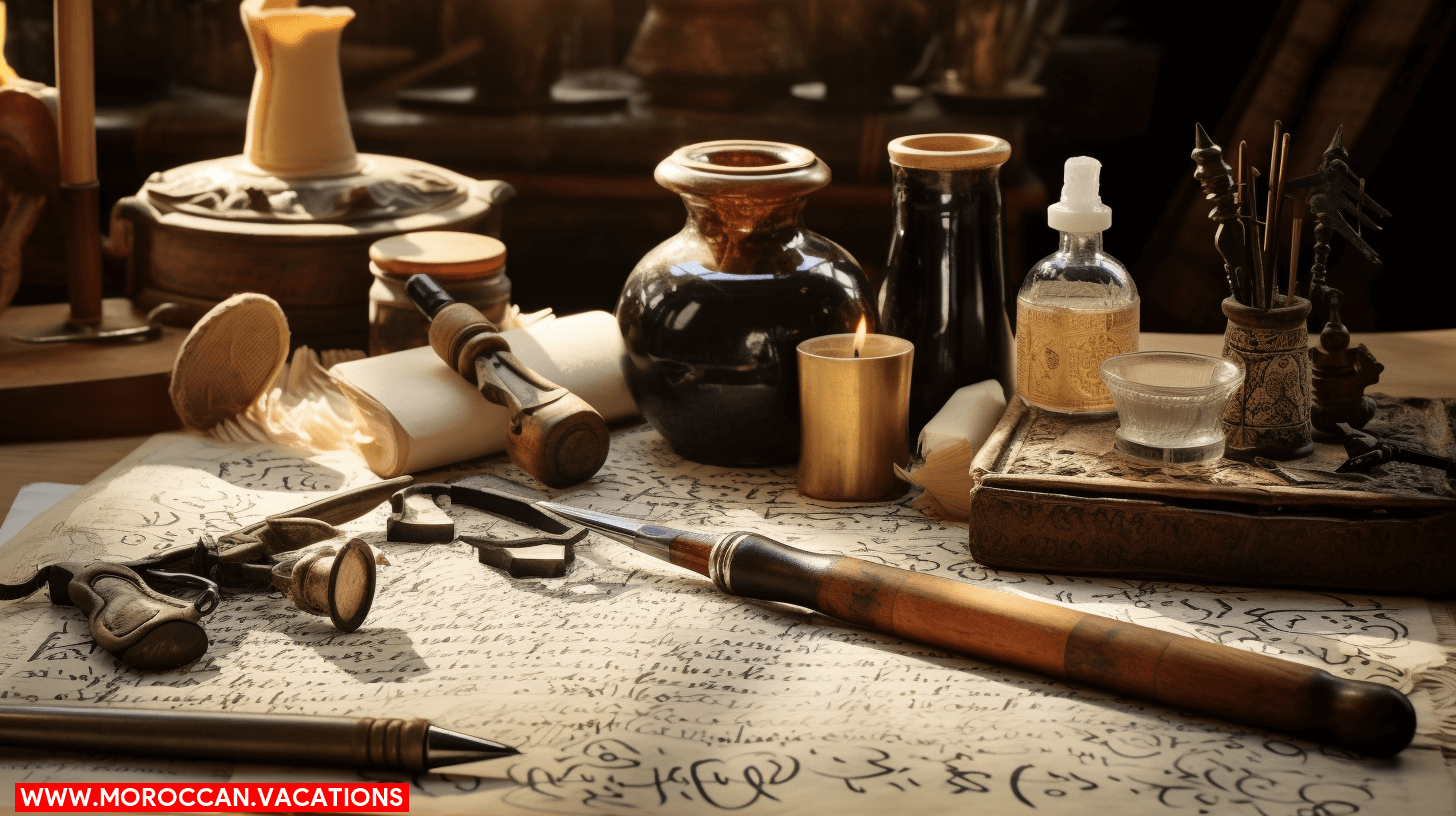

You’ve seen it on ancient walls and delicate manuscripts—the swirling elegance of Moroccan calligraphy. But have you ever pondered its origins, its spiritual undertones, or its modern revival? Dive into the artistry of words, explore the evolution of this beautiful form, and meet the masters who’re keeping it alive. You’ll not just appreciate Moroccan calligraphy’s aesthetic appeal, but you’ll also understand its deep cultural significance. Get ready, it’s time to uncover an art form like no other.
You’d be intrigued to know that Moroccan calligraphy, a captivating form of artistic expression, has its roots deeply embedded in the Islamic culture of the 7th century. This unique art form blossomed in Morocco, where it was nurtured by the nation’s rich history and diverse culture.
The cultural significance of Moroccan calligraphy is immense. It’s not merely a decoration or an art form, but a vehicle for communication, a means of preserving history, and a way to express one’s creativity and spirituality. It threads through the fabric of Moroccan society, shaping its identity and echoing its values.
Witness the calligraphic evolution that has taken place over centuries. From the elegant Kufic script of the early Islamic era to the intricate Maghrebi style, each transformation demonstrates the adaptability and resilience of this art form. You’ll appreciate how the Moroccan style retains its traditional charm while embracing the freedom to adapt and innovate.
Significant Scripts in Moroccan History
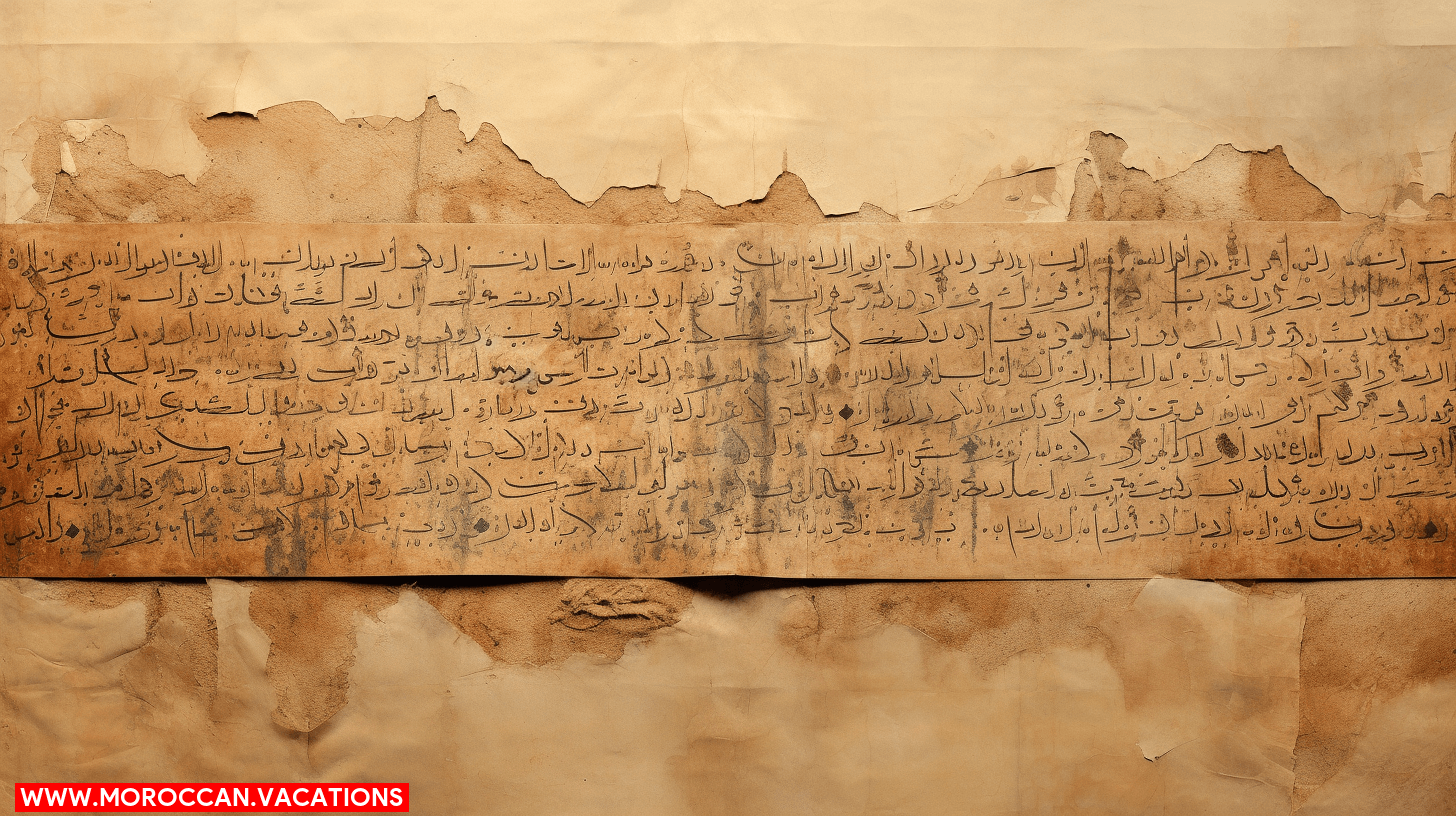

In your exploration of Moroccan calligraphy, you’ll encounter several significant scripts that have marked the nation’s history. These scripts, each with a unique aesthetic and cultural significance, have been passed down through generations, thanks to Moroccan Typography and Calligraphy Education.
Here’s an overview of the most notable ones:
| Script | Description |
| Kufic | The oldest form of Arabic script, Kufic is characterized by its angular and geometric forms |
| Maghribi | Unique to North Africa, Maghribi script is distinctive for its sweeping curves and dots |
| Thuluth | Thuluth, meaning ‘third’, is a script often used for titles or headings due to its ornate style |
| Naskh | Considered the standard script for the Arabic language, Naskh is known for its clarity and legibility |
| Diwani | Diwani is a script that originated in the Ottoman court and is known for its ornate and elaborate style |
As you delve deeper, you’ll find that each script tells a story, reflecting the social and cultural dynamics of its time. From artistic expression to religious texts, these scripts embody a spirit of freedom, giving voice to a rich history that continues to inspire today.
Tools and Techniques Used
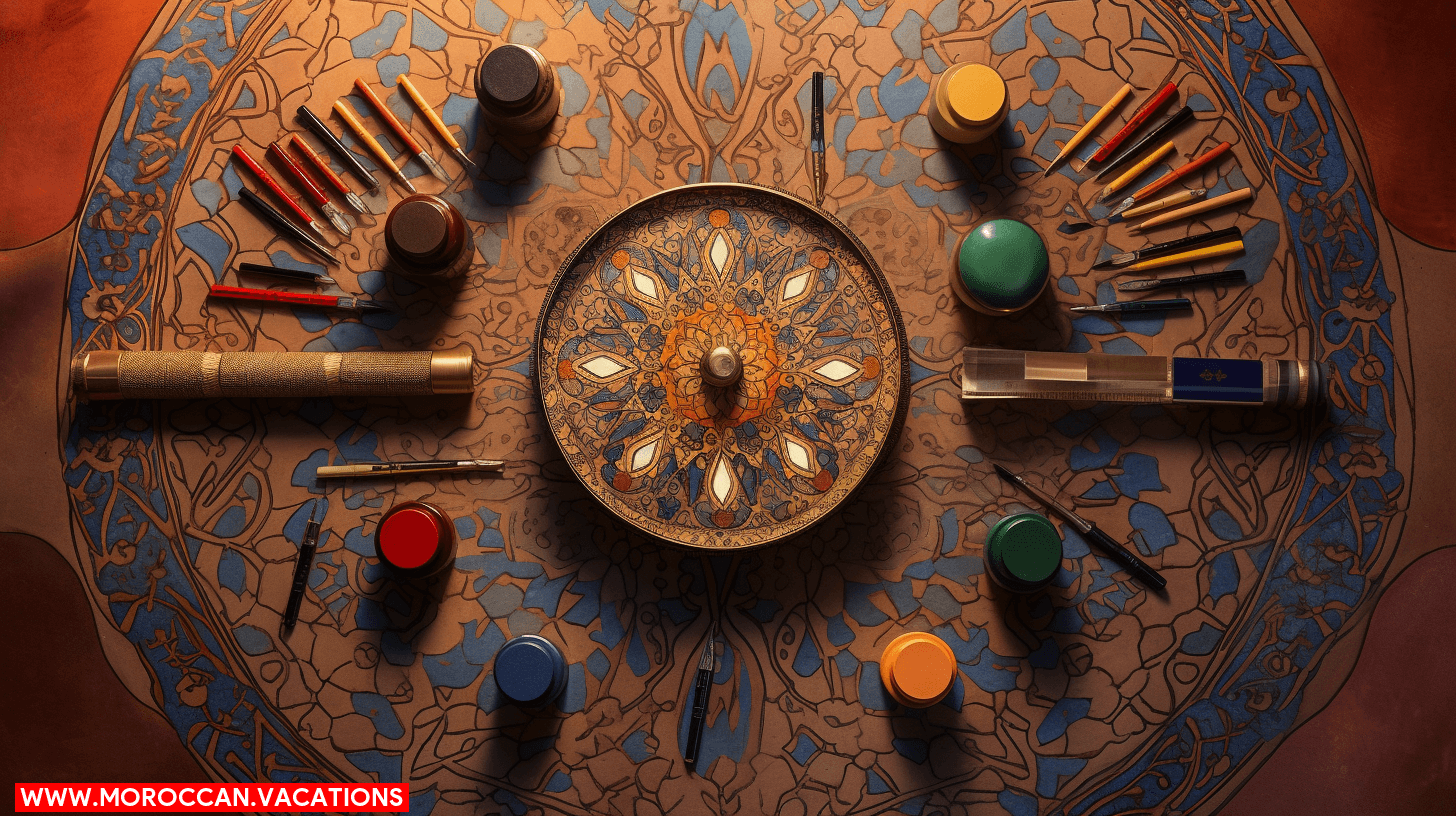

Let’s dive into the tools and techniques you’ll encounter in the world of Moroccan calligraphy. Essential calligraphy materials typically include a reed or bamboo pen, a special ink, and a high-quality paper. The pen is often hand-cut to a specific angle, offering you control over the thickness of your strokes.
Ink preparation is an art in itself, a blend of science and intuition. You’ll start with soot or lamp black, mix it with a binder like gum Arabic, and add distilled water gradually until you achieve the desired consistency. The result is a rich, deep black ink that flows smoothly from the pen onto the paper.
Moroccan calligraphers also use a range of techniques to create their intricate designs. From the basic horizontal, vertical, and circular strokes, they build up complex patterns and forms, demonstrating a mastery of line and space. The beauty of Moroccan calligraphy lies not just in the final artwork, but in the freedom of expression and creativity that the process allows. So, armed with your pen, ink, and paper, you’re ready to explore the captivating world of Moroccan calligraphy.
The Spiritual Element in Moroccan Calligraphy
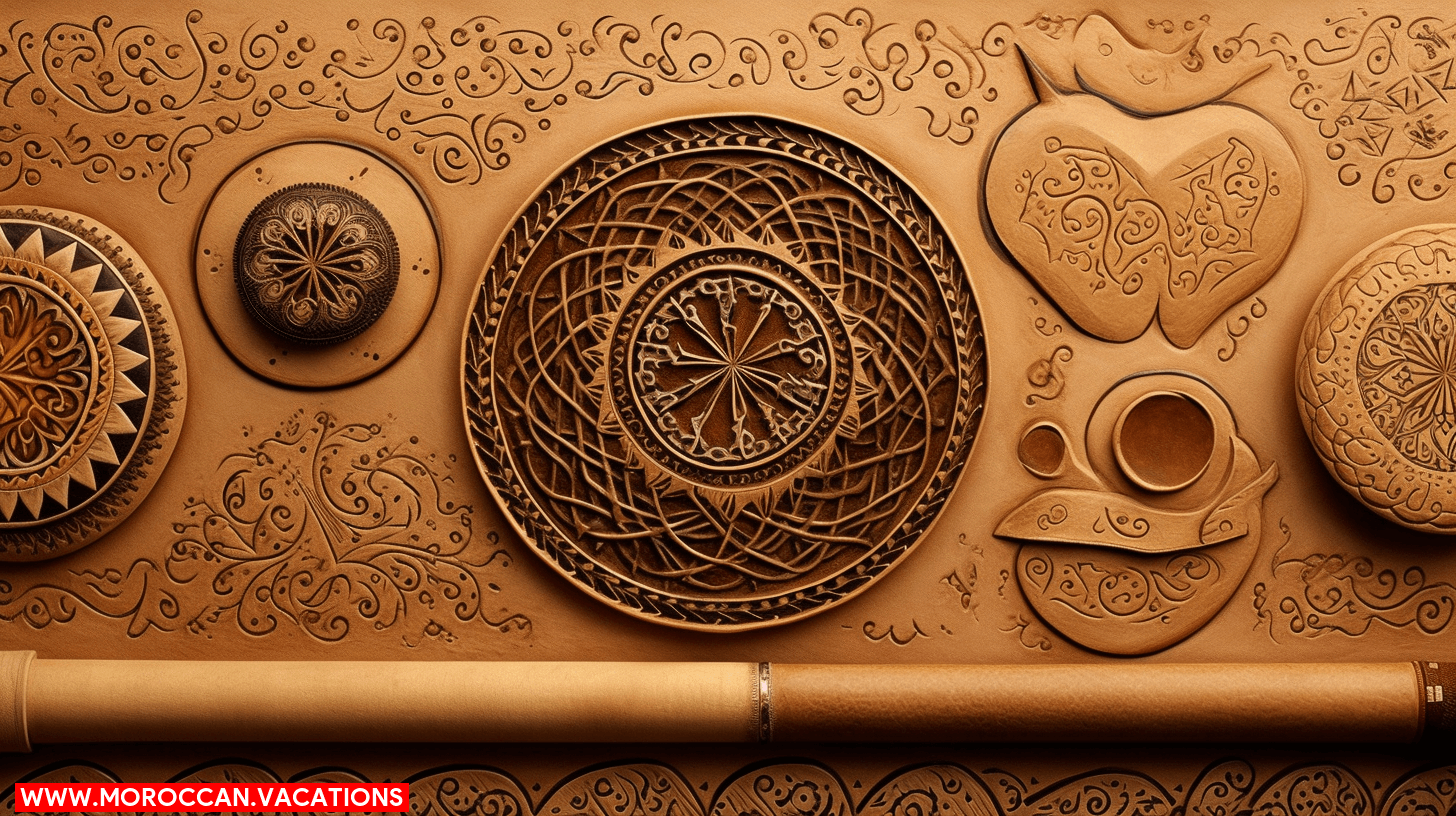

Every stroke you make in Moroccan calligraphy isn’t just a creative expression, it’s also a deeply spiritual journey. The art form is steeped in mystical symbolism and the Sufi influence, making each line more than just a beautiful depiction of words.
Understanding this spirituality can enhance your appreciation for the craft. Here are three elements to consider:
- Intention: The purpose behind each stroke isn’t merely aesthetic. You’re expressing a deeper truth, often a prayer or a divine thought. This isn’t just art; it’s worship.
- Mystical Symbolism: Each letter holds symbolic meaning. They’re not just characters; they’re gateways to understanding the divine. The Sufi influence is seen in the emphasis on the inner, spiritual meaning of the letters.
- Meditation: The act of creating Moroccan calligraphy is meditative. You’re not just writing; you’re connecting with your inner self and with the divine.
Embracing these elements gives you not just a hobby, but a spiritual journey. Remember, freedom isn’t just about doing what you want. It’s also about finding inner peace, and Moroccan calligraphy can be a path to that serenity.
Influence of Moroccan Calligraphy on Art
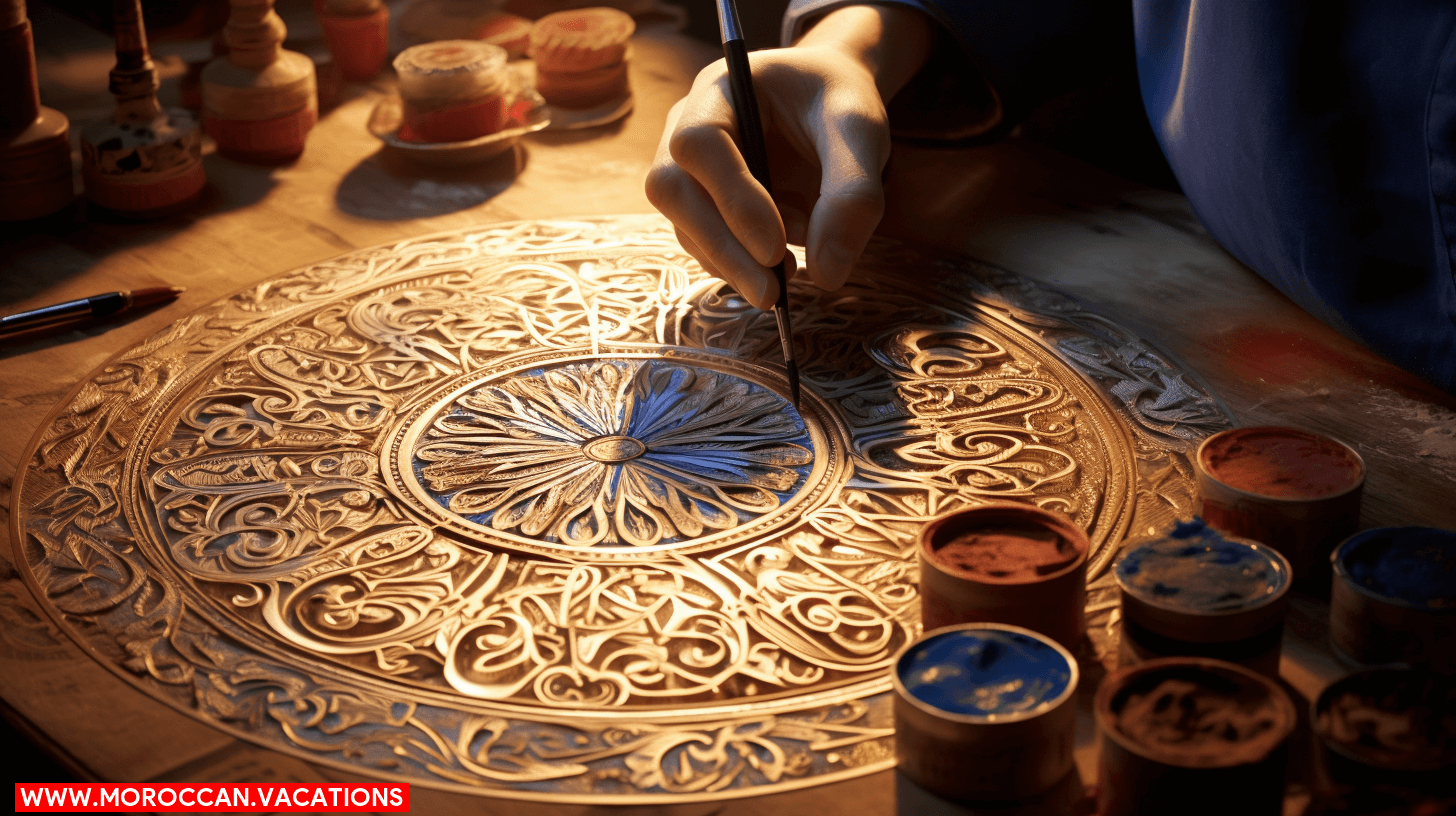

You can’t help but notice how Moroccan calligraphy has deeply influenced, and continues to shape, numerous forms of art around the world. This ancient practice, born from Islamic influence, has found its way into modern art forms, even those you might not expect, like calligraphy tattoos.
These tattoos, with their intricate designs, are more than just skin-deep beauty. They’re a celebration of centuries-old traditions, an embodiment of cultural identity, and a testament to the power of words. They’re a way for you to carry a piece of Moroccan art, history, and spirituality with you, etched onto your skin in the form of beautiful, flowing scripts.
The influence of Moroccan calligraphy isn’t restricted to tattoos, though. You’ll find it in architecture, textiles, pottery, and even digital art. Its versatility allows it to transcend mediums and cultures, making it a truly global art form.
Preserving the Art: Modern Moroccan Calligraphers
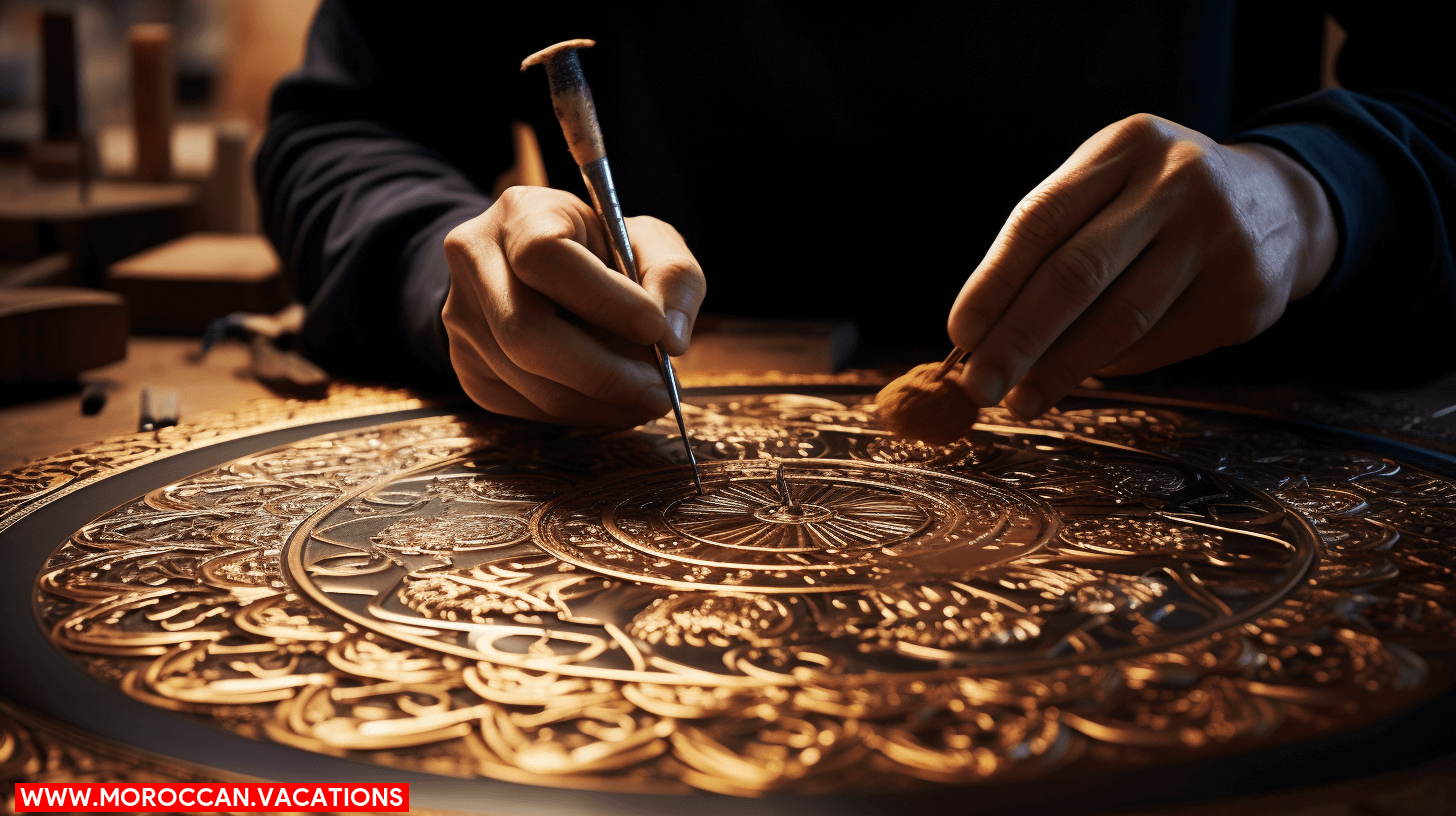

In spite of the evolution of art forms, modern Moroccan calligraphers are passionately upholding the traditional craft, ensuring you’re never far from the timeless beauty of this ancient script. They’ve taken the sacred art form and carefully weaved it into the fabric of modern life, through calligraphy exhibitions and contemporary adaptations.
- Calligraphy Exhibitions: These are platforms where calligraphers showcase their creativity. They’ve become lively cultural hubs, attracting enthusiasts and potential artists. Here, you’ll witness an eloquent blend of tradition and innovation.
- Contemporary Adaptations: These are modern interpretations of traditional calligraphy, which have found their way onto murals, fashion, and digital media. The essence of the ancient script is kept alive, albeit with a fresh twist.
- Preservation through Education: Many calligraphers have taken up teaching, ensuring the art form doesn’t fade away. They’re passing on the torch to the younger generation, thus keeping the tradition alive.
There’s an undeniable charm in the fluidity of Moroccan calligraphy that captivates you. It’s a testament to the enduring power of this art form and the resilience of its practitioners, who are continuously evolving yet holding onto their roots. So, embrace the freedom to explore, and you’ll uncover the rich, layered beauty of Moroccan calligraphy.
Introducing Ayoub Karbachi, a brilliant wordsmith and curator of the Moroccan Vacations website. Prepare to immerse yourself in mesmerizing narratives and extraordinary moments, as he unveils the allure of Morocco's captivating destinations like never before.
Related Articles
The Intersection of Tradition and Modernity: Marrakesh's Art Scene
The Rich Heritage of Marrakesh's Art Step into the vibrant world of Marrakesh's art scene, where tradition and modernity collide in a captivating dance. Here, ancient crafts intertwine with contemporary artistry, creating a tapestry of creativity that will leave you...
Marrakesh's Art Workshops: A Hands-On Experience of Creativity
Exploring Marrakesh's Artistic Heritage Are you ready to unleash your creative potential? Look no further than Marrakesh's art workshops, where you can immerse yourself in a vibrant culture and learn new techniques and mediums. These hands-on experiences will allow...
The Symbolism in Marrakesh's Architectural Details
Uncover the rich symbolism woven into Marrakesh’s architectural details. From intricate tilework to ornate carvings, explore the cultural significance behind the city’s stunning landmarks. Embark on a journey of discovery through Marrakesh’s hidden meanings and timeless beauty.

